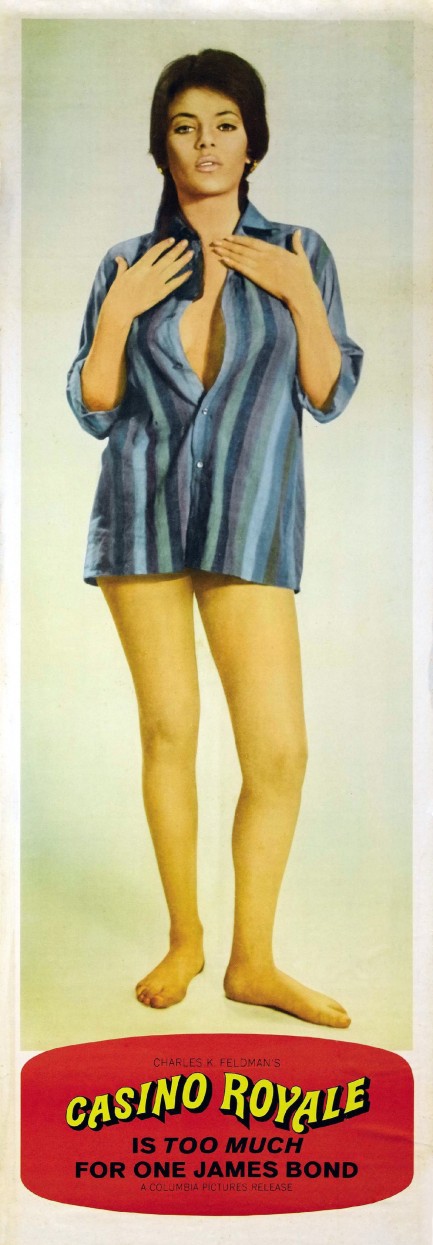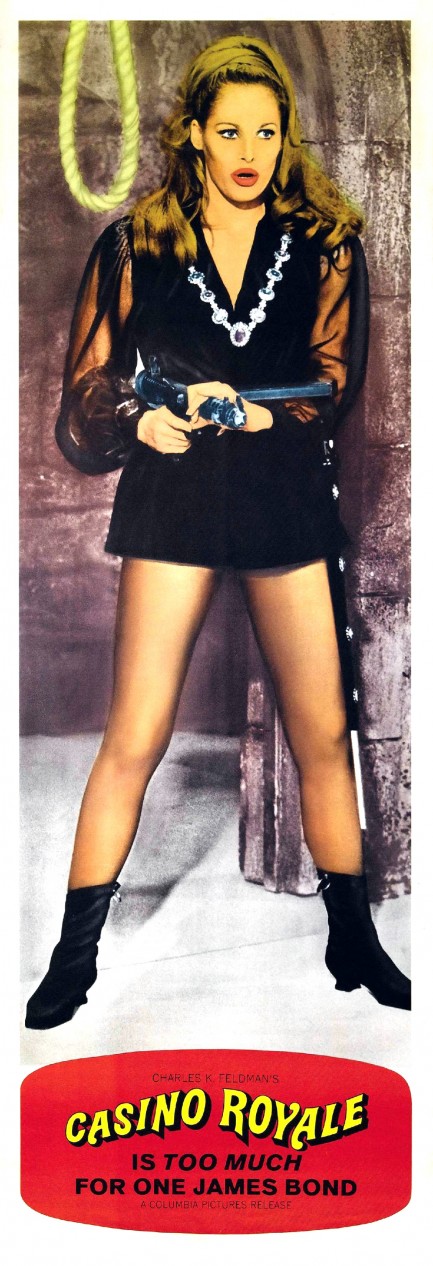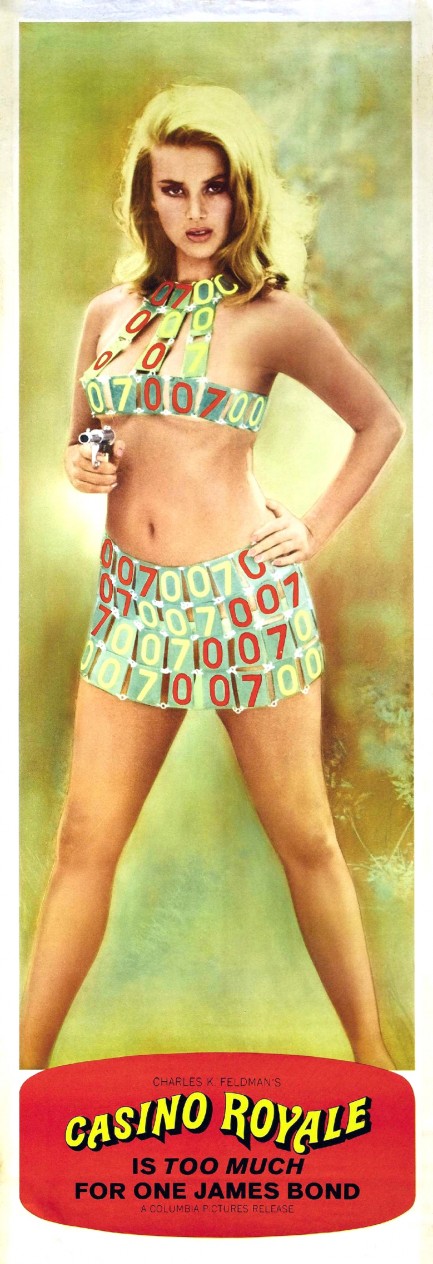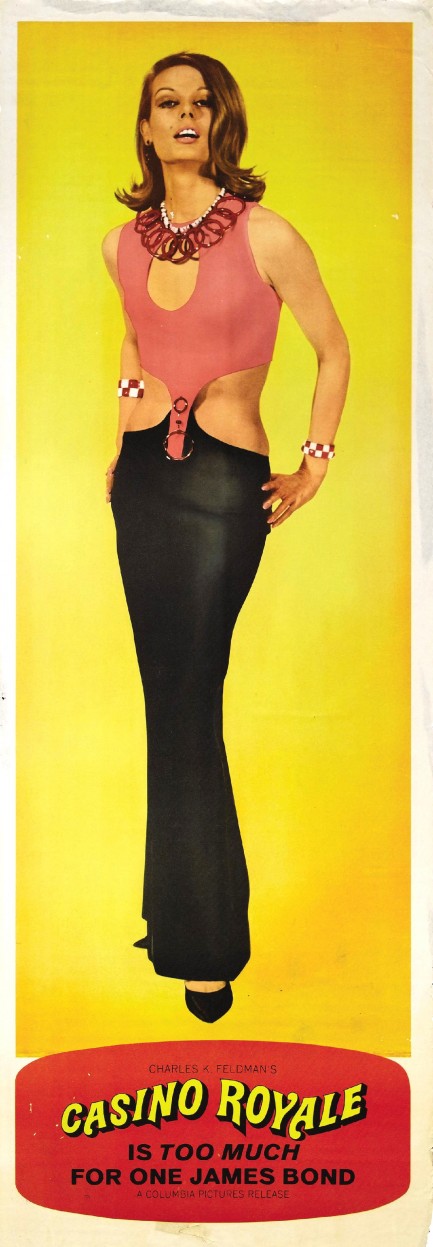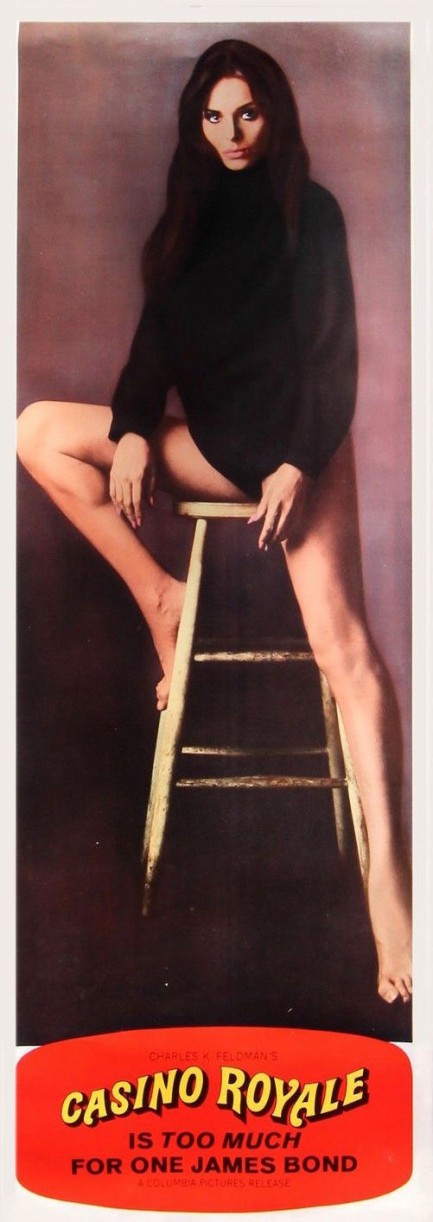| Femmes Fatales | Jun 17 2020 |

James Bond's daughter leaves the Soviets shaken and stirred.
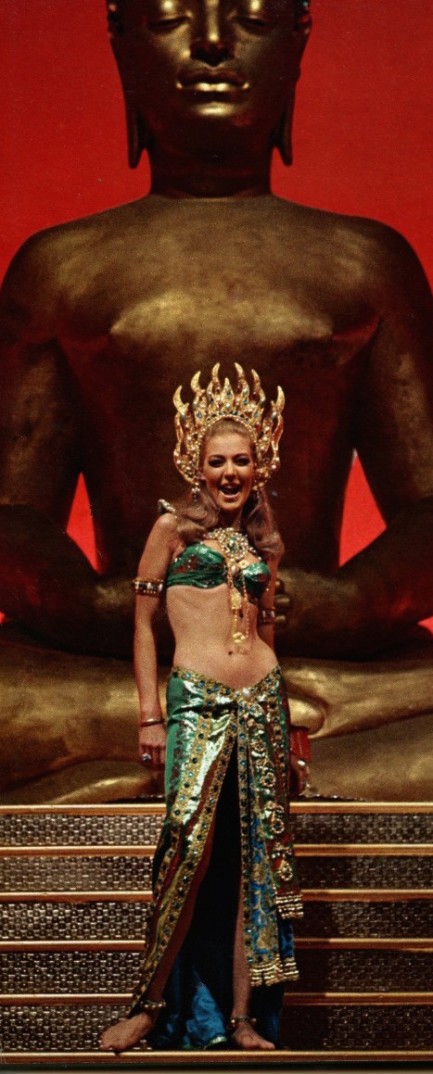
The 1967 James Bond spoof Casino Royale was a box office disaster, but it had its moments. London born actress Joanna Pettet, playing Mata Bond, estranged daughter of Mata Hari and Sir James Bond (David Niven), performed an eye-catching, Buddhist-themed dance number in a faux temple that must have cost a huge chunk of the movie's budget. We don't know how actual Buddhists feel about the bit, but it looks like Pettet had a laugh or two. In the film she's sent to take on SMERSH, the Soviet spy agency that appeared in fictionalized form in Ian Fleming's Bond novels. Pettet appeared in a handful of other films, but her career mostly comprised television roles on shows such as The Fugitive and Night Gallery. Her Mata Bond dance is short but probably worth a look. You can see it while the link lasts here.
| Vintage Pulp | Dec 16 2013 |

It’s possible to have too many Bonds.
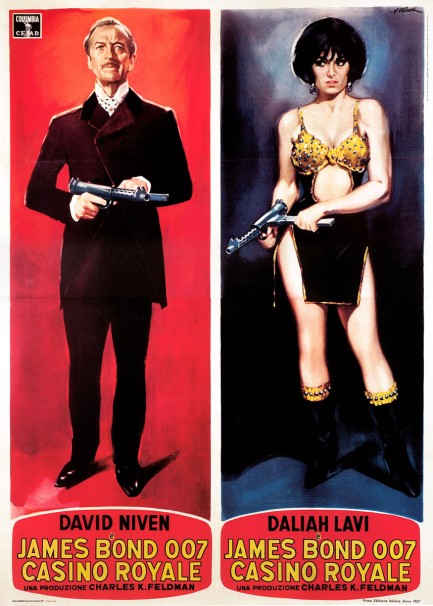
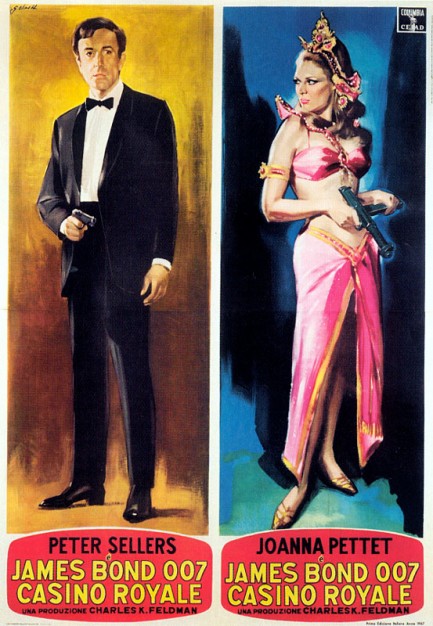
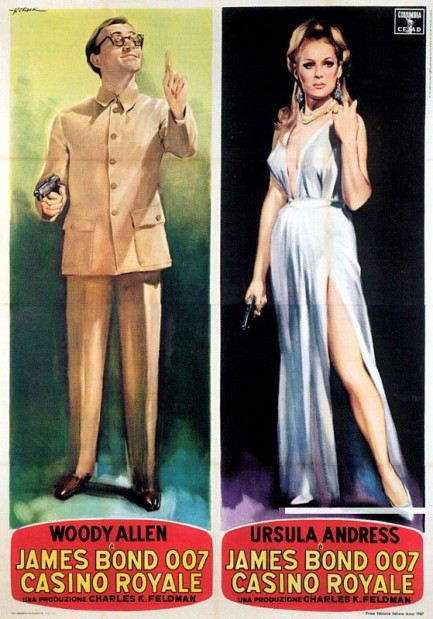
1967’s Casino Royale wasn’t a global Christmas movie in the sense that today’s films are, however it did premiere Christmas week in ten European countries, as well as today in Japan. The movie wasn’t good. Basic idea: Sean Connery is an imposter, so the real James Bond in the form of David Niven is coaxed out of retirement, and he comes up with a plan to confuse his arch enemies SMERSH by renaming all British agents—male and female—James Bond. Time’s review of Casino Royale was headlined “Keystone Cop Out,” and The New York Times’ Bosley Crowther was just as scathing, noting that “since it’s based more on slapstick than wit, with Bond cliché piled upon cliché, it tends to crumble and sprawl.”
But one thing about holiday blockbusters—past and present—is that they’re expensively promoted. The many posters produced to sell Casino Royale were top notch. A U.S. poster painted by the legendary Robert McGinnis remains one of his most iconic pieces, but we also like these Italian quattro foglio promos painted by the extensively and expensively collected Giorgio Olivetti. We saw a set of these asking $8,500 at an auction site. By contrast, below are several U.S. promos, not paintings but photo-illustrations, on which the film’s secondary players get starring roles. They aren’t nearly as collectible as the movie’s paintings, but they’re pretty, so we’re sharing them as well.
